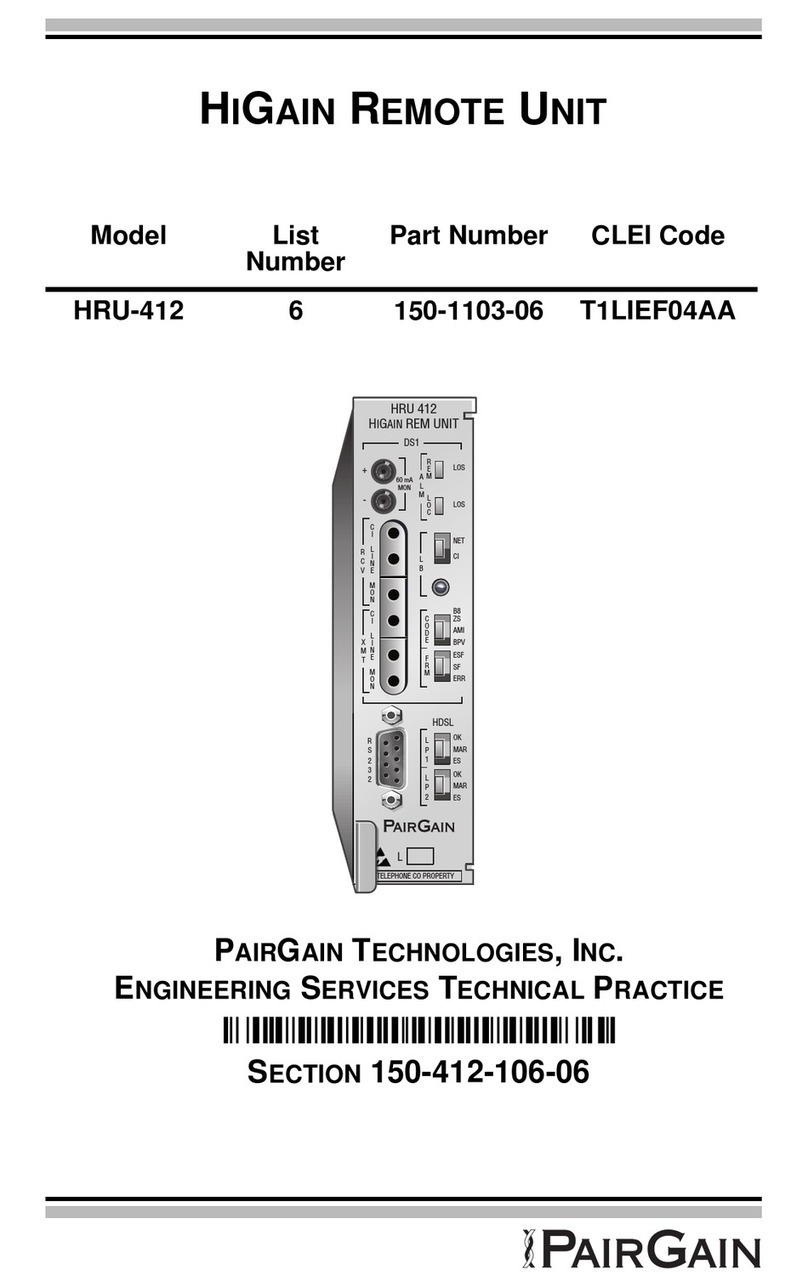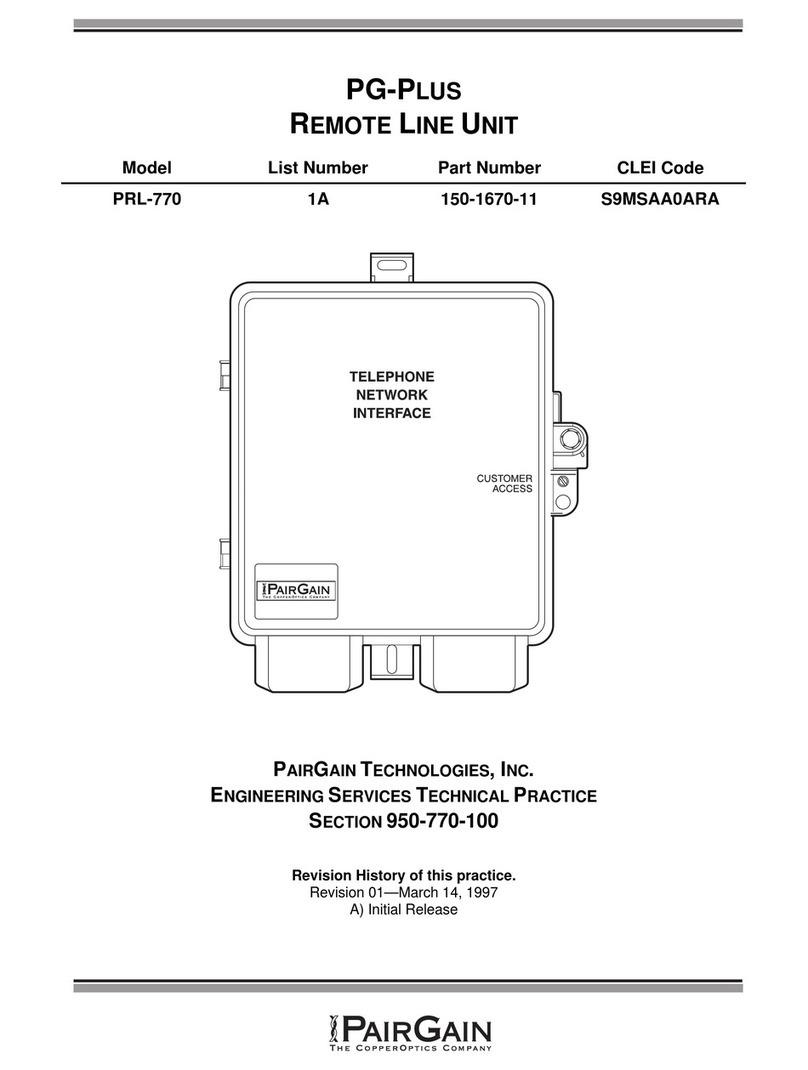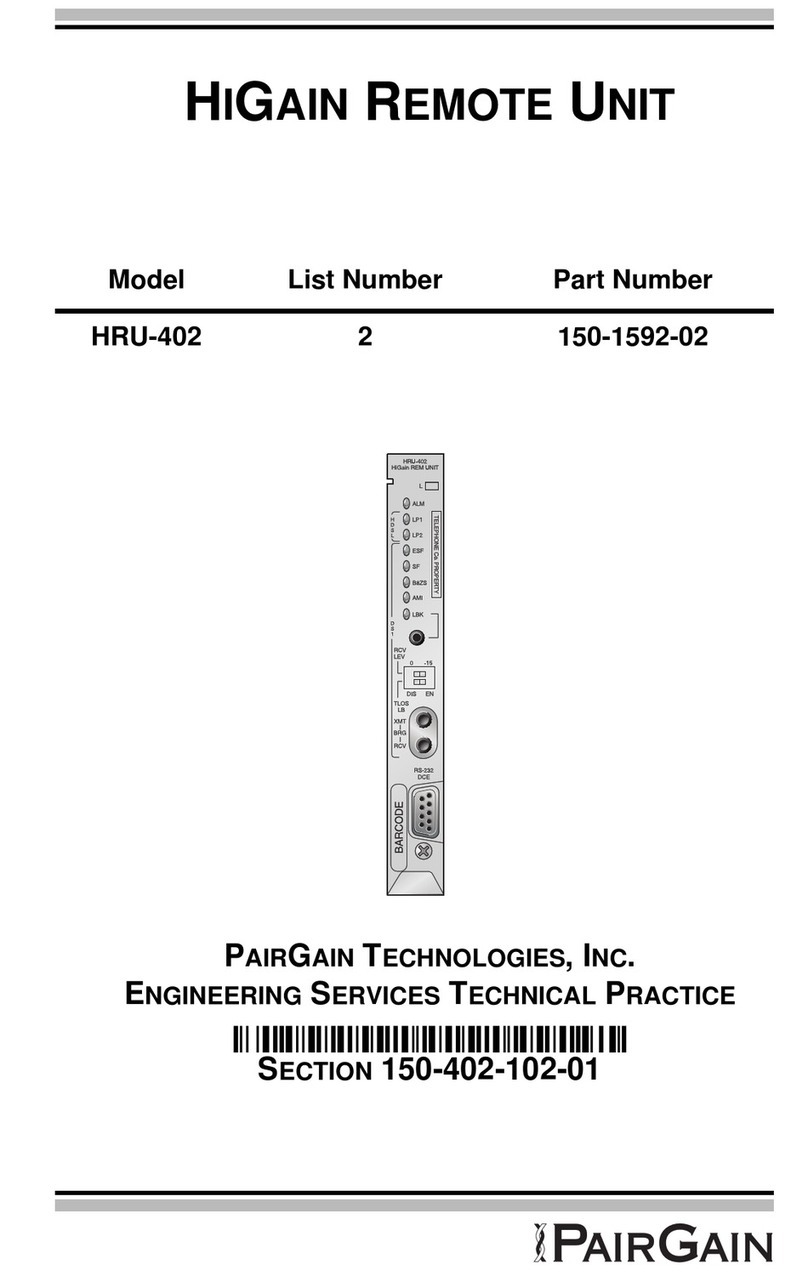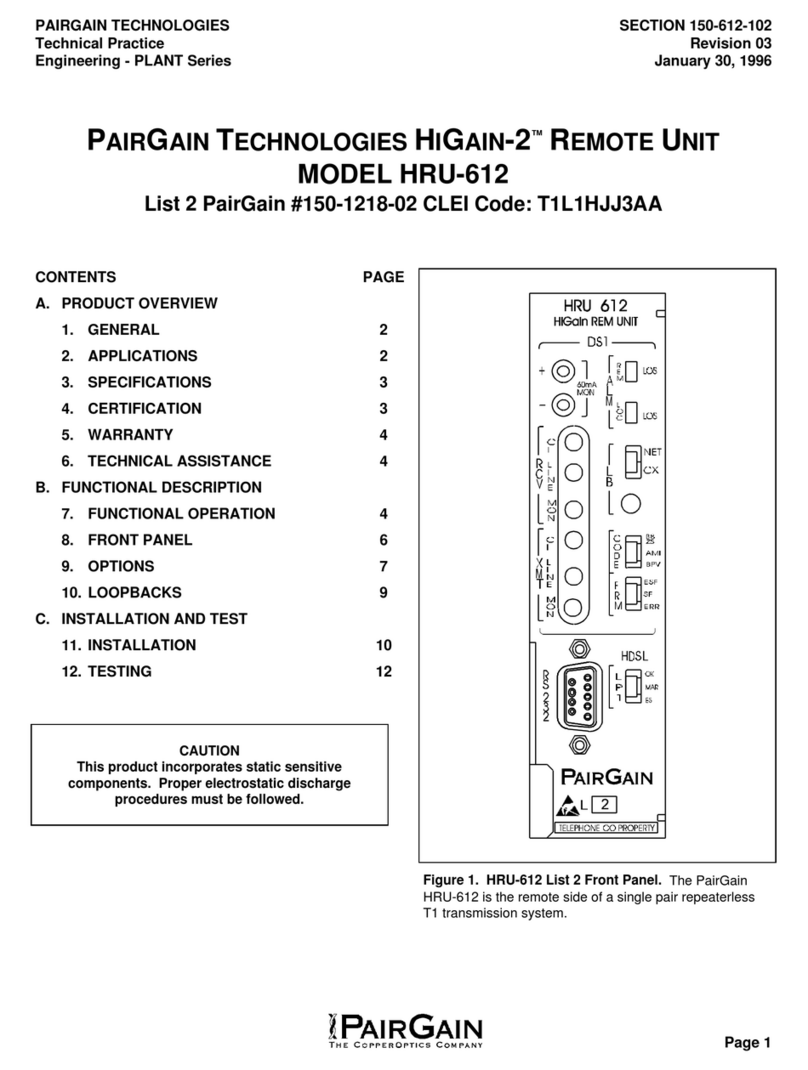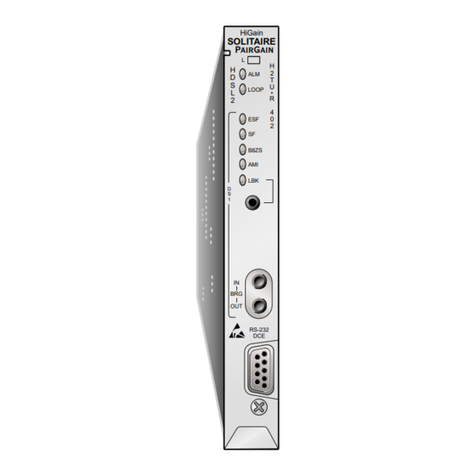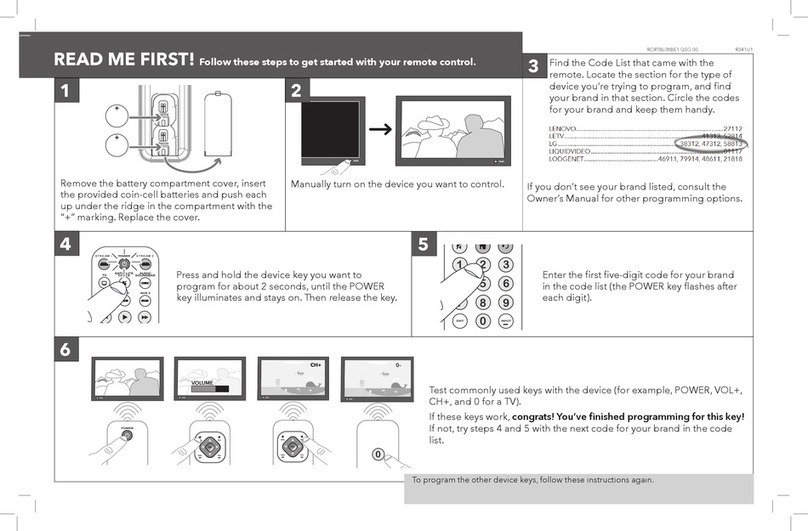
Section 150-319-124
Revision 03
Page 8
5.07 The Circuit ID option is set by choosing the
Hoption from the terminal Main Menu screen (see
Figure 7 for non-doubler applications and Figure 16
for doubler applications). The message “ENTER
CIRCUIT ID#:” (24 characters max) follows the “H”
selection. Press Enter after entering the chosen set
of alpha-numeric ID characters; choose Cto confirm.
Note that if more than 24 characters are entered, a
“Beep” is emitted, and only the first 24 characters are
accepted. The ID appears in all HLU-319, List 2D
screens, as shown in Figures 7 through 14 for non-
doubler applications and Figures 16 through 34 for
doubler applications. The ID does not appear on the
HRU-412 screens when the maintenance port is
accessed at the remote unit. Note that the Circuit ID
can not be set to its factory setting (all blanks) setting
when the DFLT setting option is utilized (see Section
A Paragraph 5.03).
5.08 To set the DS0 Blocking option, from the Main
Menu screen, press Cto select the System Settings
Menu screen. The menu shown in Figure 10 (for non-
doubler applications) and Figure 22 (for doubler
applications) appears. Press B, as shown in
parentheses of the DS0 blocking selection. The DS0
channels are blocked or unblocked by entering each
channel number. Multiple channels can be selected
by inserting a space between each entry. After all the
new settings have been made, press E(“Exit”) and C
(“Confirm”). The new choices are now installed. Also,
all blocked channels are temporarily “unblocked” for
all HiGain system loopback tests. This allows the
standard full bandwidth T1 loopback tests to be
performed.
5.09 To set the Margin Alarm Threshold, select G
from the System Settings Menu screen. Enter the
desired minimum acceptable alarm threshold from the
0 to 15 dB range. This causes a minor alarm to occur
if either the margin on HDSL loop 1 (MAL1) or loop 2
(MAL2) of any span drops
below
the selected
threshold value (see Section 4). Since the margin can
never drop below 0, choosing 0for the margin
threshold turns the margin alarm off.
5.10 Other system settings are set by using a
terminal in a similar manner. Enter the key
represented by the letter in parentheses of the
parameter to be changed. Each entry of this letter
scrolls the parameter to its next value. Hit the Enter
key after making each selection. After all selections
have been made, press Eto “Exit” and Cto “Confirm”
the changes. This activates the new choices and
returns control to the Main Menu screen.
5.11 The new T1 transceiver chip in the List 2D
allows the unit to process both B8ZS and AMI code
inputs, regardless of the DS1 code setting (AMI or
B8ZS). Earlier units caused input BPV, if B8ZS
patterns were processed while in the AMI mode.
When the newer units are in the AMI mode, they can
receive B8ZS but can only transmit AMI. For this
reason, mixed systems (those consisting of both HLU-
319, List 2D and older Lists 1, 2, 3, 3A and 4 HRU-
412 units) will respond differently in each direction for
B8ZS inputs when in their AMI modes.
5.12 The Self-test mode, which occurs when both
HDSL loops are not in-sync, has been enhanced to
include the input DS1 transceiver chip in the self-test
procedure. This process can cause the Alarm
Indicating Signal (AIS) pattern, which is normally
transmitted from the HLU-319, List 2D during these
out-of-sync intervals, to exhibit occasional BPVs.
5.13 The HAIS option provides two selections (1LP
and 2LP) for the T1 transmit outputs at both the HLU-
319, List 2D and HRU-412 for HDSL loss-of-sync
conditions. The “1LP” selection causes the AIS
pattern to be transmitted at both T1 outputs when
either of the two HDSL loops experience a loss-of-
sync (LOSW) condition or when a margin alarm
occurs. This choice causes the 12 channels on the
surviving loop to be lost as they are replaced by the
AIS pattern. However, it allows both down and
upstream equipment to be made aware of the loss of
one HDSL loop or a loop with low margin. The 1LP
selection is the preferred setting to be able to initiate
an AIS state with just one conductor open in either of
the HDSL pairs. Short loops, below about 16 dB of
loss at 200 kHz, can remain in-sync with one
conductor open. Since the loop is still in-sync, no
LOSW condition occurs. However, the margin on a
one-conductor loop drops from 5 to 10 dB. Thus, if
the margin alarm is set to 5 dB below the normal
margin at turn-up, when one conductor opens, a minor
alarm occurs and causes the AIS condition. This
alerts the maintenance personnel of the problem. The
“2LP” choice requires both HDSL loops to be out-of-
sync (LOSW) before the AIS signal is transmitted.
This choice preserves the integrity of the 12 surviving
channels when just one loop is lost.
5.14 All user options that affect the operation in
both the HLU-319, List 2D and HRU-412, (such as
HAIS, SAIS and DS0 blocking) are not available in
older versions of the HRU-412, Lists 1, 2, 3, 3A, and 4
that do not support these newer options.
